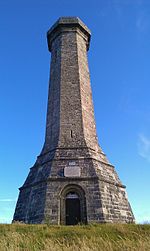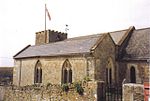Portesham
EngvarB from May 2016Villages in Dorset

Portesham, sometimes also spelled Portisham, is a village and civil parish in the county of Dorset in southwest England, situated in the Dorset Council administrative area approximately 6 miles (10 km) northwest of Weymouth, 6 miles (10 km) southwest of the county town Dorchester, and 2 miles (3 km) northeast of the Jurassic Coast World Heritage Site at Chesil Beach. The parish is quite large, covering several outlying hamlets and what were once their manors. In the 2011 census it had a population of 685 in 316 households and 342 dwellings.
Excerpt from the Wikipedia article Portesham (License: CC BY-SA 3.0, Authors, Images).Portesham
Front Street,
Geographical coordinates (GPS) Address Nearby Places Show on map
Geographical coordinates (GPS)
| Latitude | Longitude |
|---|---|
| N 50.6702 ° | E -2.5639 ° |
Address
Front Street
Front Street
DT3 4ET , Portesham
England, United Kingdom
Open on Google Maps









